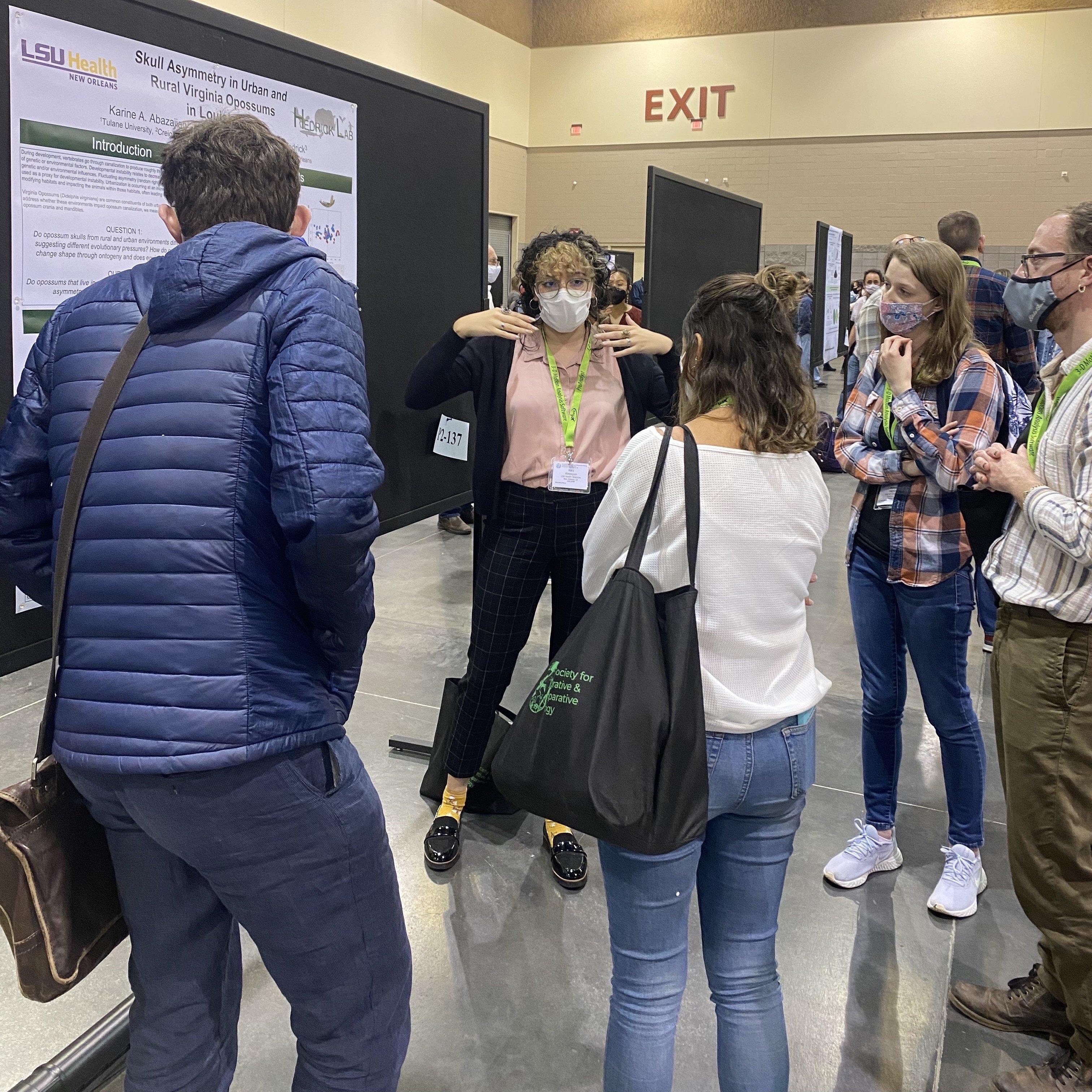Kara Abazajian: Skull Asymmetry in Urban and Rural Virginia Opossums in Louisiana
During the fall of 2021, I found out I had the opportunity to travel to Phoenix for a conference to present my research. After applying and successfully being awarded an NTC Grant. This money allowed me to purchase travel to and from the conference, a hotel to stay in during my time there, as well as the conference fees. Without this grant, my attendance would not have been possible.
On January 3rd, I took my flight to Phoenix. I met up with Brandon Hedrick, the professor at LSU Health Sciences Center whose lab I had been working in for nearly a year now. He was also the one who helped me with my research and presented me with the option to attend this conference since he had attended this conference many times in the past. This specific conference was held by SICB, or Society for Integrative and Comparative Biology.
After arriving at the hotel, we headed directly to the conference to attend our first presentation by the previous SICB president. After that first day, each day up until Friday was filled with presentations and talks and posters about a variety of different aspects of biology, ecology, and evolution. It was a completely new experience and was incredibly informative and entertaining. Despite the attendance this year being slightly reduced as a result of covid, there were still many presentations to attend, which gave conference attendees the choice of what talks to see based on their interests and what sounded the most appealing. I particularly enjoyed this aspect because I was able to attend talks that were most relevant to my interests as well as talks about subjects I knew nothing about and was excited to learn about. I learned so much about the research people were conducting on fish, marsupials, snakes, lizards, elephants and more. One of the most interesting aspects of this conference was just being able to see all the different kinds of research people were doing, how much it can vary, and how niche people’s interests can be. This also helped me to meet with many people who had similar interests in ecology and wildlife but who had specialties in many different areas from all over the U.S.
I attended Dr. Hedrick’s talk as well as Dr. Gunderson’s from Tulane, which was very illuminating to interact with people from Tulane in a different setting and to see how their research happens outside of a classroom.
On Wednesday, it was my turn to present. I had chosen to do a poster to present my research on fluctuating asymmetry in Virginia opossums and how it differs between urban and rural populations. Each day at 3:30, the posters section would commence and last until 5:30. They had an entire hall where all of the posters were being presented in rows and people would walk up and down the rows listening to whichever poster presentations sounded interesting. I was expecting to speak for a bit and have to wait for a while for others to walk up, and I was actually worried that no one would want to stop by my poster! However, I had people stop by my poster and ask questions for the entire two hours. I enjoyed talking about the research that I had spent months on much more than I expected, and the two hours passed quickly. While I was very nervous at first, it was easy to fall into a rhythm and perfect my spiel as I got more confidence in myself and my research. Now, I can easily explain my entire research process. On the other days, I got to walk around everyone else’s posters which was one of my favorite parts of the conference because it was very interactive and included people at many different levels of academia.
This was all around a very fun and exciting learning experience and I feel that I personally gained a lot from my time in Phoenix at the SICB conference. I learned so much about many different facets of biology and about the people who are in this community. As someone who is graduating soon, it was very helpful to see the paths that people take and where they have ended up. The fact that there are so many different ecological research opportunities is comforting and exciting to know as a soon-to-be graduate. I want to thank everyone who provided me with this opportunity and the NTC Grant Committee for giving me the resources to participate.

